Settling the Solar System in Science Fiction, part 1: Mercury
Science fiction has predicted many times that human beings will leave Earth to settle on the various planets of the Solar System. This dream may not be far away–certainly the technology to move humans into space has existed for roughly 50 years now but with SpaceX opening up seats to “civilians,” it may happen relatively soon. Perhaps in only a few decades the human race will become a multi-world species. This post begins a series looking at the prospects of living on the planets of our Solar System, both what living there would really be like according to current science and also what science fiction has speculated concerning each planet. Starting with Mercury.
Since it is possible that future generations really might leave Planet Earth, what science fiction has said about living in space might help us imagine what it would be like to live on another worlds–even though at times, past science fiction has been completely wrong about the planets of our Solar System. Some basic topics worth addressing in comparing science fiction with science fact include, “What is it that human beings need to survive?” Which will lead eventually to, “What is and is not the best real estate in the Solar System?”
Human Survival Needs
I remember my Fifth Grade teacher, Mrs. Ten Ham, Dutch accent and all, explaining that all humans need three basic things, food, shelter, and clothing, and that much of human history can be explained by people seeking these three things. Well, on Earth those three things are enough. Though they point out the three basic types of things people need. More broadly than food, humans need life-sustaining conditions, let’s call them “Nutrients” or “necessities of survival.” Broader than shelter, humans need protection from elements that can harm us. And covering a wider topic that clothing does, humans need resources to build things we want and need. So these are the three basic needs, with sub-needs below each of these: Nutrients, Protection, and Resources.
Nutrients–Necessities of Survival
- Oxygen–yeah it may be a bit sloppy to call O2 a nutrient, but I’m sure you follow my point. We’re talking about substances a human body needs to take in if it’s going to survive and of those, the first on the list is oxygen. Listed first because while a human may survive days without water and weeks without food, without oxygen you’ve gone in minutes. O2 carries with in a condition that in order to process the gas, human lungs can only operate within a range of air pressures–from about 1/3 atmospheric pressure on Earth if using pure oxygen, to about 100 times Earth atmospheric pressure, if we mix the O2 with a lot of helium and take other precautions. Ideally humans would want to live on a planet with free oxygen in its atmosphere–but on that account, none of the planets of the Solar System qualify, other than Earth.
- Water–while the human preference for water would be to have it in liquid bodies we can tap into easily, humans can easily melt ice for water and can even combine hydrogen and oxygen in minerals to create water. Oxygen itself we already covered in its own category, but places without a source of frozen water or at least access to hydrogen are going to create a problem with obtaining water.
- Energy (for food production)–while you might expect me to list food by itself, in fact energy pretty much equates to food in space. A hydroponic garden needs solar energy for plants to grow, or else electrically-powered lamps to replace the sun (you also need space for that, but we are going to assume up front that space has plenty of “space”). Harvested plants would feed any animals humans might choose to bring with them as food, if humans do that in the future. Or, alternatively, food could be shipped in from elsewhere, like the Apollo moon missions taking all their food from Earth–but that also takes energy, though in that case the higher energy cost of transportation by rocket fuel rather than the lower cost of local production.
Protection
- Warmth (energy for heating)–as is also true of atmospheric pressure, a human being can only survive within a range of temperatures. Given sufficient protective clothing and ample access to water for body cooling, that range is actually fairly large, from roughly minus 50 degrees Celsius (-58 F) to plus 50 (122 F)…though humans are only comfortable within a much narrower range, at most a dozen degrees above or below about 22 degrees Celsius (72 F). But of course there are ranges of temperatures a human cannot survive at all, not even for a fraction of a second.
- Radiation Shielding–the biggest heat engine in the Solar System, the sun itself, essential for providing enough energy to keep us from freezing to death and cranking out light that plants convert to food, has a negative side effect of producing a lot of ionizing radiation that kills human cells and causes cancers. Humans, while we can survive a robust range of temperatures, are much more sensitive to radiation damage than many other creatures living on Earth. Note though that true radiation shielding isn’t easy to come by. Earth provides it through both a magnetic field and also a relatively dense atmosphere. When talking about other planets of the Solar System, we have to account for the amount of radiation shielding they have.
- Meteor Shielding–Not only can radiation cook you or give you cancer, outer space is full of small bodies flying around at relative speeds much higher than a bullet. Even a very small bit of matter can ruin your day if it’s going fast enough and you’re in a pressurized chamber. Note that a planet with a dense atmosphere does much to protect from meteors.
- Gravity–in spite of decades of fiddling around in low Earth orbit, science has established quite well that a human body needs at least some gravity in order to properly function. Without it, bones atrophy, fluid builds up in the upper body, normal formation of embryos simply won’t happen, and so human life is in jeopardy. Which means any planet humans settle on has to be of a minimal size to provide enough gravity. How little is enough is actually unknown–but there definitely is a minimal amount humans require.
- Toxin and Waste Removal–some planets are full of chemicals that could kill humans. And, even in places where that isn’t a problem, humans in the very act of living produce carbon dioxide and solid and liquid wastes that threaten our survival. Without a means to remove or process wastes and toxins, humans will not survive. Soil that can absorb wastes is a good start on that and some planets have soils outside of Earth, though many don’t.
- Safety from Attack–since none of the planets of the Solar System are known to be inhabited, this seems a low-order priority. Though in general, humans have attacked one another often enough that the need to defend oneself could not be entirely ignored in the future.
Resources
- Survival Resources–I’ve already named these above, but let’s summarize them here: oxygen, hydrogen, energy for food production and warmth, a body of minimal size for protection provided by gravity and protection from radiation, with a means to clean toxins and wastes.
- Resources Beyond Survival–humans are going to want to have more than the bare minimum of resources. They are going to want to be able to cover themselves (back to the clothing thing Mrs. Ten Boom talked about) and create art and build new tech and have personal possessions of a wide variety of types. That means any place humans settle will have to have building materials of some kind.
Why Space Stations and Space Ships Suck For Human Survival
Reading through the list I generated above, it should be pretty obvious that the types of space stations humans build now or any time in the foreseeable future are not very good at providing for human survival.
First off, there are no resources in empty space itself other than what you take with you, other than solar radiation that you can harness with solar panels if you’re close enough to the sun. But that one resource comes with a danger of high-energy radiation zipping through a human body so fast that over time, a human suffers irreparable damage.
Second, if you lift everything you use from the surface of a planet, everything goes through a high energy cost just to get there. And, what you will be able to fly there will be insufficient to protect a person from high radiation, doesn’t supply gravity automatically, needs heating and cooling, and will vent into vacuum if a bit of space rock blasts into you at high speed. No bueno.
Yeah, careful designs can help with some of these problems, but this is an issue that’s often downplayed in science fiction, especially the issue of exposure to radiation. There are no energy shields that block radiation in the real world. You can block radiation with physical matter, but it would take about 1 meter’s worth (3 feet)(as this Space.com article mentions) of solid lead to roughly equal the amount of protection that Earth’s atmosphere and magnetosphere provides. Obviously a spacecraft can’t realistically move around with that much lead. Too much fuel would be needed. So a person who spent decades in outer space, as is often imagined in science fiction, would in fact die of radiation poisoning, barring some major genetic engineering of the human race in the future.
The known solution to this problem is moving through space as quickly as possible, then settling on a planet that can provide some protection.
What’s Mercury Got For Survival?
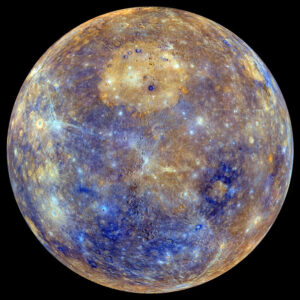
Mercury with enhanced color to show composition differences. Image source: NASA
Near as the sun as it is, Mercury has a massive potential for solar energy. It also has oxygen bound up in its rocks and many scientists believe that deep caters near Mercury’s north and south poles have water ice (though there’s no absolute proof of this as of now).
As far as protection goes, every patch of ground on the surface of Mercury (except right at the poles) faces intense solar radiation for about 29 days, then faces the blackness of space for about the same time, 29 days (Mercury has a full day that’s 58 Earth days long). It’s estimated Mercury gets up to 427 degrees Celsius (800 F) during the hottest part of the day and down to minus 180 C (-290 F) during the coldest part of the night. That’s a massive temperature swing that obviously no human being can survive. However, going underground deep enough would allow a person to find a level where the temps are pretty much the same night and day, within the range humans can handle.
Another bonus of going underground is doing so would provide radiation protection and meteor shielding. And Mercury has about 38 percent the gravity of Earth, which is probably enough to allow humans to survive and thrive (note Mercury and Mars have practically the same amount of gravity).
Toxin and waste removal probably would not be helped by doing everything underground and Mercury doesn’t have any soil, but there are ways to solve these issues. But security from attack would be better underground than on the surface.
And Mercury, with the largest metallic core in proportion to its interior of any planet in the Solar System, would have quite a lot of metal for building, especially iron and steel, but other metals, too. Not much carbon though–in fact, to do things like make good soils or fabricate plastics, Mercury would have to import carbon. And would benefit from importing hydrogen or hydrocarbons as well, but still, has most of the things humans need to survive and prosper.
How Has Science Fiction Seen Mercury?
Let’s note up front that a lot of old science fiction imagined much of the Solar System to be friendly to life or to contain alien life. Relative to Mars or Venus, it was relatively uncommon in science fiction to imagine anyone could live on Mercury. Sci fi writers commonly saw it as just too close to the sun, too hot.
Tidally Locked?
However, “Relative to Mars or Venus” still allowed for quite a lot of speculation that perhaps there are places a person could live on Mercury. Most of the speculation was based on the theory that the Italian astronomer Giovanni Schiaparelli came up with in 1889–that Mercury is “tidally locked” so that one face is always pointed at the sun and the other is always pointed towards the cold darkness of outer space. Once that concept became popular, some people believed that perhaps there might be a literal twilight zone between the hot and cold sides that would be temperate. Perhaps a canyon system in this temperate zone could hold an atmosphere, creating a place where humans or human-like creatures could live and breathe. Ray Cummings wrote a trilogy that imagined this very thing: Tama of the Light Country (1930), Tama, Princess of Mercury (1931) and Aerita of the Light Country (1941).
There are other examples of these kinds of stories, detailed in a “Mercury in Fiction” Wikipedia article I’ve linked. Though in fact not all stories set on Mercury imagined anyone could live on the surface of Mercury. Some saw it as a place of exploration or for a solar observatory or a place silicon-based aliens would set up a base, or, on the dark side, the coldest place in the Solar System.

An old “If” magazine cover showing astronauts exploring molten Mercury. Image now in the public domain.
New Mercury
In 1965 scientists discovered that Mercury is not in fact tidally locked, but rather has an odd rotation in which its day is two thirds the length of its year, meaning that at certain locations in its orbit, Mercury always shows the same face to the sun–but in fact the whole planet, other than the poles, gets hot and cold. So, many concepts of an inhabited Mercury went away, though a few remained.
Arthur C. Clarke in Rendezvous With Rama imagined Mercury metal miners inhabiting Mercury (as did the tongue-in-cheek Captain Proton series-within-a-series in Star Trek Voyager), while Kim Stanley Robinson imagined Mercury hosted a city named “Terminator” mounted on rails which allowed it to always remain in the twilight on Mercury’s surface, though it would need to be under a dome due to Mercury’s lack of atmosphere. Note Robinson imagined Mercury would be the abode of musicians and artists rather than the miners many other authors thought would inhabit Mercury (note also the word “terminator” in his city refers to a technical term in astronomy for the point where day meets night–not where cybernetic “terminators” seek to assassinate specific targets 🙂 ).
Warren Ellis and Darrick Robertson in their transhumanist cyberpunk comic series Transmetropolitan imagined Mercury completely covered in solar panels, with energy beamed back to Earth, while Karl Schroeder’s novel Lockstep imagined a future in which Mercury would no longer exist, being broken up into pieces in order to create a “Dyson bubble” around the Solar System. Which would also harvest solar energy. (These and other concepts of Mercury are detailed, again, via the Wikipedia article on Mercury in fiction.)
Summary
So in essence there have been three basic science fiction ideas about living on Mercury:
- Living on the surface somehow, in the twilight zone or at the poles or on some kind of movable city. This idea has the disadvantage that even in twilight quite a lot of harmful solar radiation would come through. But still, the idea isn’t impossible, even though Mercury isn’t tidally locked, as Kim Stanley Robinson’s fiction shows.
- Underground settlement of Mercury, which would mostly mine metals. I think this idea is quite realistic.
- No settlement but use of Mercury for energy production: This idea is possible, but in fact Mercury is good real estate for human underground settlement, providing most of the things humans would need to survive–if underground far enough. But it could be that Mercury is never settled.
What’s Unique About Mercury
Transportation Hub Potential
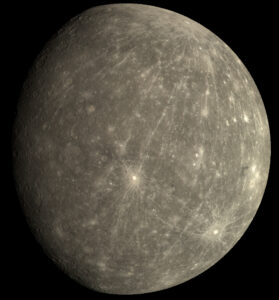
Mecury in true color. Image source: NASA
It’s counterintuitive, but did you know that Mercury is on average closer to any other planet in the Solar System? Or to put that in a slightly different way, did you know that on average, Mercury is closer to all the other planets than any one planet is to any other planet? How can that be?
It’s because planets usually spend only a relatively small amount of time in the position of the closest approach to one another. Planets spend a great deal of time on the opposite side of the sun from each other or in otherwise unfavorable positions relative to one another. Whereas Mercury, with a year 88 days long, comes to its closest approach relative to every single other planet at least once during its short year. Meaning that even though, for example, Mars and Earth get very close to each other once in a while (when in the same place in their orbits at the same time), they spend most of their orbits far from each other.
Mercury gets as close as it will get to either of them on average much more often than they make their closest approach to one another. Meaning the average distance between either of them and Mercury is less than the average distance between Earth and Mars.
This is a bit of a mind-blower but it’s completely true and even applies to the outer Solar System. On average, Mercury is closer to Pluto than Neptune is, even though for part of Pluto’s orbit it crosses inside Neptune’s orbit. Again, that’s because for much of the orbits of Pluto and Neptune they are on completely opposite sides of the Solar System–whereas at some point every 88 days, Mercury is not only on the same side as either of them, it’s at the closet approach to them.
If Mercury had some kind of launch system for shooting goods to other worlds–say a giant electromagnetic railgun, then Mercury would be the idea place for a warehouse to supply and distribute goods to other places in the Solar System (without the railgun you’d have to bring in fuel to Mercury or perhaps make fission-powered rockets from radioactive metals in Mercury’s core to ship goods out). This idea is awesome in theory, except for one little problem…
Landing on Mercury is Hard, Though Some Solutions Are Possible
Because Mercury is relatively close to the sun, a vessel from the outer Solar System will pick up velocity heading Mercury’s way. Velocity that the craft will have to carefully balance or get rid of once arriving at Mercury itself in order to safely land. Mercury doesn’t have an atmosphere substantial enough to use for air braking or parachuting in, so all things considered, moving things to Mercury and touching down there for a landing is relatively difficult. Which could mean that Mercury as a hub for moving things to other planets would only work if the goods Mercury sent to other worlds carried the tag, “Made In Mercury.”
Or perhaps that would mean the one thing a colony on Mercury could really use is some kind of electromagnetic system that would capture vessels flying in at high speeds and slow them down enough to land safely without using a lot of fuel. If Mercury had such a system, it could both send and receive products produced elsewhere in the Solar System and distribute them out efficiently.
Also note that flying towards the sun to get to Mercury would expose a spacecraft to a much higher level of solar radiation than staying further from the sun. Yes, this is a real problem–though one made better if designers used automated ships to go to and from Mercury.
Conclusion
Have you ever read a story set on Mercury? Thought about writing one set there? Considered the potential of living there? Would it bother you to live underground all the time? Or would you need to be on the surface, in a city like “Terminator”?
It’s interesting perhaps that the science fiction series “the Expanse” sees a future Mars being a powerful player in Solar System politics, but in fact, Mercury could be every bit as powerful as Mars, if not more so. Humans have just been imagining living on Mars a lot longer…
What do you think about these issues? Please share your thoughts in the comments below.































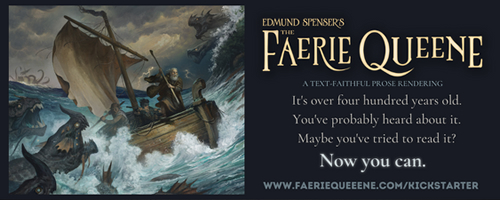

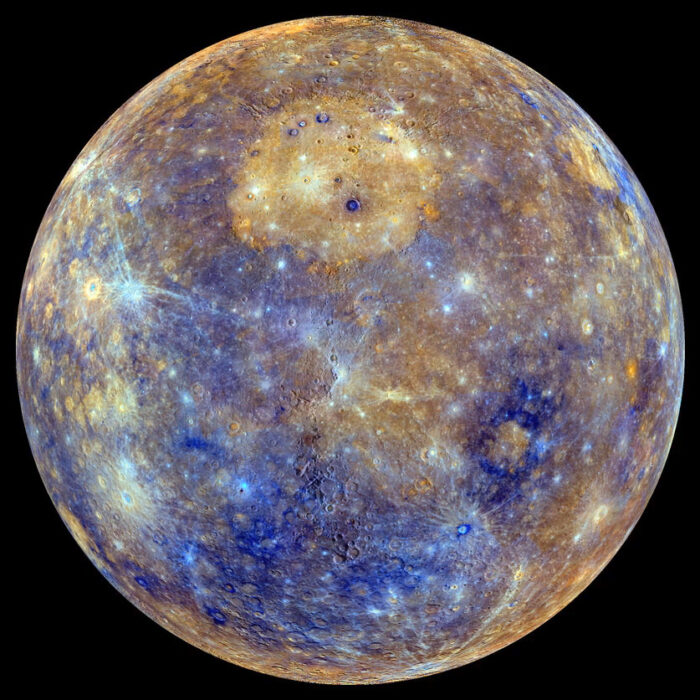

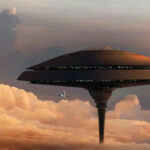





Good article. Unmanned everything would need to go to Mercury first to bore the deep tunnels needed for life. I’m thinking some machinery embedded in an icy comet or asteroid for protection from the hazardous radiation that can destroy machinery of both biological and mechanical kinds. Energy generated by temperature variances would be nearly free after the initial set-up. Again, we don’t know how much gravity is needed for normal biological development, but I can see spinning chambers used for processes that require higher gravity than Mercury can provide.
Except for the initial problems of arriving and setting up before being melted, I can see Mercury as being much more viable than Mars for permanent settlement.
Well, I think machinery could support the radiation well enough to get a colony started without having to be encased in a comet. Humans could also land on the nightside to start a colony, but they’d have a definite time clock to dig deep enough to survive the day (they’d probably have to use explosives). Not that the night would be all that friendly, but heating the cold is a doable thing–but surviving the daytime in the open just isn’t going to happen.
I will get to it when I discuss Mars, but the general thoughts most people have on Mars ignores a lot of real problems. One of the biggest being that Mars has no reliable sources of energy. On the grounds of energy alone, Mercury is more viable than Mars.
But it is easier to travel to Mars from Earth for sure. And easier to set up a colony on the surface (though not a good idea on Mars, either). So we will likely see a colony on Mars first, but a Mercury colony might be more successful. As per what you said.
Thank you for your comment!
Heh, my fifth grade teacher read Corrie Ten Boom’s book to the class, so I was reminded of that when you mentioned your fifth grade teacher.
I haven’t thought much about living on Mercury. It being so close to the sun would concern me a bit. Being able to live safely on a planet’s surface sounds so much more appealing, but I’ve noticed that my tolerance for staying inside depends on a lot. If I know I can’t go outside or am not allowed to (like in a quarantine) that bothers me a lot more than if I stayed inside because I decided playing on the computer was more fun. Thinking about living underground on Mercury kinda feels the same. The fact that I couldn’t go to the surface might bother me in and of itself.
Something that would greatly factor in people being able to have a good quality of life underground, in space or even an early moon colony would probably depend in part upon having a few small luxuries and a decent amount of mental stimulation. Do the aesthetics of the place feel cramped or monotonous? If so, and people are staying at the colony long term, they might need to consider designing the colony differently. Or at least having some kind of virtual reality stations available for people to play in and get at least some of the same visual stimuli they would have on earth.
I do use the idea of underground colonies as an easy out for dealing with some of the peskier problems of how my chars could survive in certain worlds and situations.
Have you listened to Isaac Arthur on youtube? He talks about a lot of the science of colonizing space, sometimes in relation to science fiction.
I’ve watched a couple of Isaac Arthur videos but am not a regular viewer.
As for Mrs. Ten Boom, I actually think I goofed–the name of the well-known Christian speaker influenced the name I put in the post. I think her real name was Mrs. Ten Ham–so I will go back and change that detail now.
As for living underground, it’s an interesting aspect of human psyche. Would humans who had always lived underground find that normal? Would a large space underground with stars projected on it be enough to alleviate claustrophobia?
I imagine though that a new colony would have pretty low quality of life. Everyone working long hours to excavate new tunnels and manufacture new goods, that kind of thing. Though that would depend on the population growth of the new colony. If the growth was high, that would imply more hard work to make room for the next generation and feed everyone. Which might lead to the people in such a colony to look back at the lifestyle of Earth as horrifically decadent…
Anyway, it’s definitely something I find interesting to consider.
Time for a Star Trek scheisspost: https://www.pinterest.com/pin/50665564547208124/
Ok…and I’m curious what inspired you to post that here. Care to elaborate?
Star Trek is a natural progression of talk about space. I guess I’ll post a funnier one next time.
I thought you were trying to make a deep comment about how Kirk as portrayed in TOS of Star Trek had some philosophical connection to whether planets would be colonized or not. Or how they would be colonized.
Or perhaps there was some hidden commentary as to whether I am like Kirk from TOS or not.
I wasn’t expecting you to say in effect, “Here’s a random article.”
(I must have bored you.)
I COULD do that. The narratives about how space will be colonized have been based pretty heavily on the narratives of how the American plains were colonized, which are subject to the same bull honkey as Kirk Drift. Now that cowboys aren’t popular, it’s been sublimated into zombie and post-apocalyptic fic.
Nobody but granny hippies and gay cottagecore aesthetes want to tell stories about how weaving and knitting will save the day against frostbite (I’m not a granny nor gay but I’m guilty of that). Inter-tribal aggression will probably just lead to a lotta dead people without any higher purpose served, but luckily humans have already invented a lot of d*ck-measuring rituals that could largely take the place of actually killing anyone. Y’know, like sports have in the modern era (ask E.O. Wilson).
PS: But it seems to me like you’re too much of an introvert to be either OG Kirk or the Zap Brannigan version of Kirk.